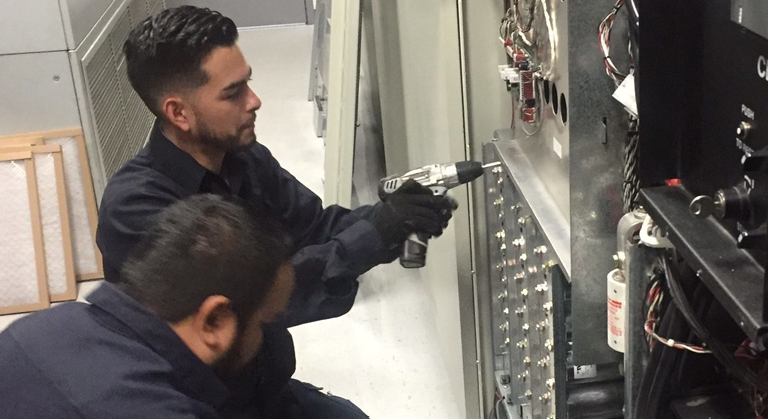Now that you know the importance of UPS upgrade and replacement, the next big dilemma is when and how to execute them to avoid compromised power supply. Who reminds you to upgrade your UPS systems and how you will know the right time to replace UPS batteries.
A properly maintained UPS system is critical to saving a data center from frustrating and costly downtime. UPS systems for data centers are long-term investments. Generally, people don’t want to migrate to a new UPS system as this means potential downtime. Nobody wants to suffer such operational overheads. However, with increased operational needs for power load, upgrading a UPS system eventually becomes a mandatory process for all data center owners.
Why upgrading your UPS is necessary?
If you think that your UPS still performs well and it really does not need a further investment, you may think twice. Technology is continuously evolving, so the performance and scalability needs of your data centers. Your IT staff may need to increase the infrastructure and rack density of data centers to serve additional server demands. Any interruption in an adequate power supply can jeopardize backup assistance and halt the entire show. The UPS systems you bought a few years ago may not match the operational sufficiency they need today. Therefore, continuous upgrade and scalability have become a mandate for every IT house.
Here are a few guidelines you may consider while upgrading your UPS systems or replacing UPS batteries. These will help you with the timing as to when to upgrade your UPS systems.
Know the difference between your current load and future power needs
The first step is to determine the realistic load estimate of UPS units. If you follow manufacturer’s rating, it is good to know that the volt-ampere rating given on the name plate of your UPS system does not really reflect its actual efficiency for data centers. Regardless of how ratings are mentioned, you always get lesser power load than the specified capacity. Because there is a Power Factor (PF) or reactance involved and no UPS runs at full capacity. You should learn to calculate the effective power supply load of your UPS systems and then decide on the future needs for supply enhancement.
The formula of actual power load is Watts = Volt x Ampere x Power Factor. As per the derived data, a 100 kVA (kilo volt-ampere) UPS system with a PF (Power Factor = ratio of watts and volt-amperes) of 0.8 supports only 80kW of actual power load, not 100 kW in reality. With today’s computing technology, the commercial UPS system can support up to 0.95 to 0.98 PF.
Read UPS display to measure power capacity
The sole process of knowing the capacity of your UPS is to check the UPS display. Monitoring the percent load will tell you how near you have reached the maximum capacity of UPS in terms of kW or kVA. However, this percentage value does not really reflect the consumption for the total UPS capacity. It displays the value being consumed for the most highly loaded phase.
Save on power load using three-phase UPS systems
The advantage of phase imbalance in large UPS system is that you get the power load shared among the three phases, i.e., 33.33% of share for each. So, if the loads are not equal in all three phases, you will fail in reaching the total maximum capacity.
Let us take an example. A 100 kVA UPS has 0.9 Power Factor (PF) or 90 kW capacity. Now if you load the phase A to 95%, phase B to 60%, and phase C to 25%, you will never be closer to the maximum capacity, even if the UPS display shows 95% reading. Instead, you will save 40kVA or 36kW, which is 40% of the total kVA. This indicates that the phase unbalancing gives your UPS additional breathe space to outgrow when required. So your requirement analysis for the new UPS unit or UPS batteries upgrade should consider these phase related factors into account.
Learn how UPS capacity ratings work
In ideal conditions, it is better to run your UPS at 80% of its total capacity. This gives some breathing space to the UPS to withstand load during peak operating conditions. It also helps you install an alternative system prior you discharge the older one. If you need a planned load of 80kW, a 100 kVA/ 100 kW with 1.0 PF is good enough considering you maintain phase balance of around 5%. However, if the PF is lesser than 1, then your UPS needs to be of over 100 kVA to produce more than 100kW capacity.
Try and test modular UPS
This gives you flexibility in terms of using UPS capacity. Such UPS is of two types – one with physical UPS and UPS batteries as required for near-term growth. The other one is a system with a higher total capacity, which can be further configured to supply power as per requirement. In both the cases, you pay only for the load you need to consume now. At the same time, you get provision for an increased capacity at an additional cost.
Involve key stakeholders
Build a team of people with diverse experience including data center manager, electrical contractor, facilities supervisor, electrical engineers, and so on. Representatives with various knowledge bases can provide immediate assistance as and when the situation demands. Their consultation and expert advice help you plan a smooth transition of UPS system for your data centers.
Conclusion
The most obvious way to identify the power needs of your data center is when you see your UPS is outdated and incapable of supplying power load. However, it is prudent that you plan your UPS maintenance well in advance, much before you see a clear sign of upgrade or battery replacement. The longer you wait, the higher is the loss of efficiency and downtime cost. Evaluating the realistic needs of power load ensures that you don’t end up investing more for your data center, yet enjoy a dramatic improvement in UPS efficiency over time.
To get more valuable information on UPS systems, batteries, replacements, and related upgrades, you can visit Lorbel store. This is our mega store with a wide collection of battery backup equipment of reputed brands. For detailed information about UPS and Battery backup brands, kindly

